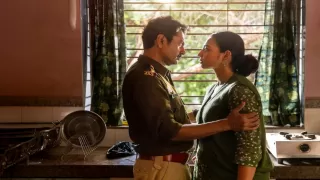The income tax refund is the one aspect of the budget that the salaried class looks forward to. On February 1, 2024, Finance Minister Nirmala Sitharaman presented the Interim Budget 2024, maintaining the same tax bracket rates for the existing and new income tax regimes.
On Thursday, February 1, 2024, Sitharaman made her budget address. 'Keeping with the convention, I do not propose to make any changes relating to taxation and propose to retain the same tax rates for direct and indirect taxes, including import duties,' she stated.
From a prudential standpoint, it makes sense for the Finance Minister to have refrained from making any changes to the rates and slabs of personal income tax in the Interim Budget. 'Fiscal consolidation must be balanced against sufficient capital expenditure to support growth in light of the ongoing global headwinds,' stated Ashish Aggarwal, Director of Acube Ventures.
Nonetheless, considering the high inflation levels and the underlying signs of a recession in the main global economies, individual taxpayers were hoping for some respite. 'In particular, salaried professionals have had to deal with the twin whammy of unstable job markets and rising living expenses without receiving commensurate wage increases from employers. Certain features would have given some cushion, such as an increased standard deduction, improved home loan interest exemptions, or adjustments to 80C instruments. Therefore, it is reasonable for the salaried class to be somewhat disappointed with personal taxes,' stated Ashish Aggarwal.
What Is an Income Tax Slab?
Individuals in India are subject to income taxation via a slab system, in which varying tax rates are attributed to varying income brackets. The tax rates rise in tandem with an individual's income. This kind of taxation makes it possible for the nation to have a progressive and equitable tax structure. Periodically, usually with each budget, the income tax slabs are changed. The different taxpayer categories are subject to varied slab rates. Let's examine all of the slab rates that will be in effect for FY 2022–2023 (AY 2023–24) and FY 2023–2024 (AY 2024–25).
Where can I get the documents for Budget 2024?
The Union Budget Mobile App, available on iOS and Android, provides access to the interim Budget 2024. You may also visit the website at www.indiabudget.gov.in after the budget address.
Income Tax Slab For FY 2022-23 (AY 2023-24)
New regime tax slabs| Income tax slabs (Rs) | Income tax rate (%) |
|---|---|
| From 0 to 3,00,000 | NIL |
| From 3,00,001 to 6,00,000 | 5 |
| From 6,00,001 to 9,00,000 | 10 |
| From 9,00,001 to 12,00,000 | 15 |
| From 12,00,001 to 15,00,000 | 20 |
| From 15,00,001 and above | 30 |
- There would be no tax on income up to Rs. 3 lakh.
- There will be a 5% tax rate on income between Rs. 3-6 lakh (a tax refund is allowed under Section 87A).
- A 10% tax rate would apply to income between Rs. 6 and Rs. 9 lakh (a tax refund of up to Rs. 7 lakh is possible under Section 87A).
- Average income of Rs. 9–12 lakh at 15%.
- Average income of Rs. 12–15 lakh plus 20%.
- A tax rate of 30% would be applied to income exceeding Rs. 15 lakh.
| Income tax slabs (Rs) | Income tax rate (%) |
|---|---|
| Up to Rs 2.5 lakh | NIL |
| Rs 2.5 lakh - Rs 5 lakh | 5% |
| Rs 5 lakh - Rs 10 lakh | 20% |
| > Rs 10 lakh | 30% |
- Under the previous tax system, income up to Rs. 2.5 is not subject to taxes.
- Under the previous tax system, income between Rs. 2.5 and Rs. 5 lakh was subject to a 5% tax rate.
- Under the previous system, personal income between Rs. 5 lakh and Rs. 10 lakh was subject to a 20% tax rate.
- Private income over Rs. 10 lakh was subject to 30% tax under the previous system.
| Income tax slabs (Rs) | Income tax rate (%) |
|---|---|
| Rs 0 - Rs 3 lakh | NIL |
| Rs 3 lakh - Rs 5 lakh | 5% |
| Rs 5 lakh - Rs 10 lakh | 20% |
| > Rs 10 lakh | 30% |
| Income tax slabs (Rs) | Income tax rate (%) |
|---|---|
| Rs 0 - Rs 5 lakh* | NIL |
| Rs 5 lakh - Rs 10 lakh | 20% |
| > Rs 10 lakh | 30% |
Important things to consider if you decide to use the new tax structure:
Note that under the new tax regime, the rates of taxation are the same for individuals in all categories: individuals, senior citizens, and super senior citizens.
People who have net taxable income of less than or equal to Rs 5 lakh are entitled to tax rebates under Section 87A, which means they won't owe any taxes under either the new or old tax regimes.
Income up to Rs 7 lakh would be tax-free from FY 2023–2024 due to an increase in the refund under the new system, which was announced in Budget 2023.
Surcharge Rates:
- 10% of total income (up to Rs. 50 lakh) in income tax
- 15% of income tax if earnings exceed one crore rupees.
- If total income exceeds Rs. 2 crore, 25% of income tax
- If total income exceeds Rs. 5 crore, 37% of income tax
The maximum surcharge rate of 37% was lowered to 25% in Budget 2023 per the new tax structure (effective as of April 1, 2023).
The income subject to section 111A (Short Term Capital Gain on Shares), section 112A (Long Term Capital Gain on Shares), and section 115AD (Tax on Income of Foreign Institutional Investors) shall not be subject to surcharge rates of 25% or 37%. As a result, 15% will be the maximum surcharge rate on the tax due for such incomes.
The highest surcharge rate on tax due for capital gains or dividend income specified in Section 112 will be 15% as of Assessment Year 2023–2024. Additionally, an Association of Persons (AOP) made up only of businesses will only be able to levy a 15% surcharge.
The income tax liability plus surcharge in all situations will be increased by an additional 4% Health and Education cess.


























